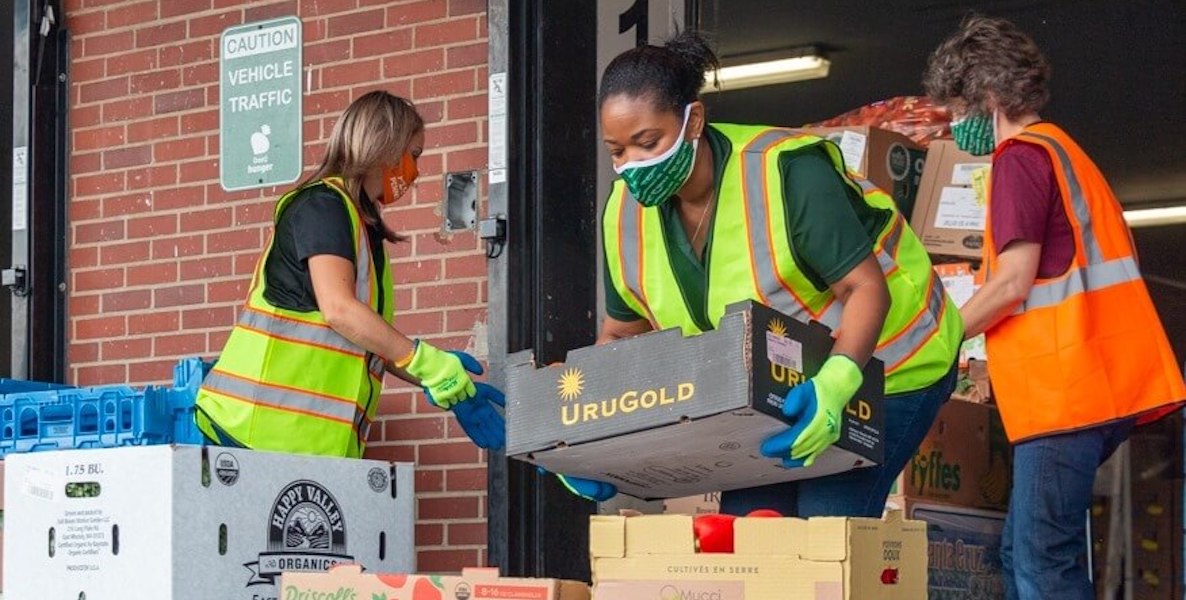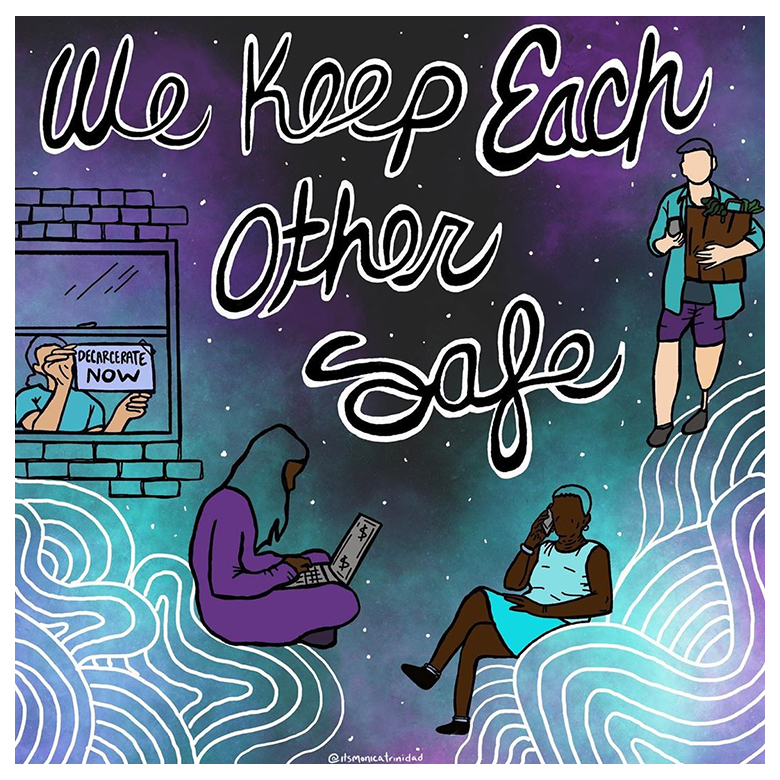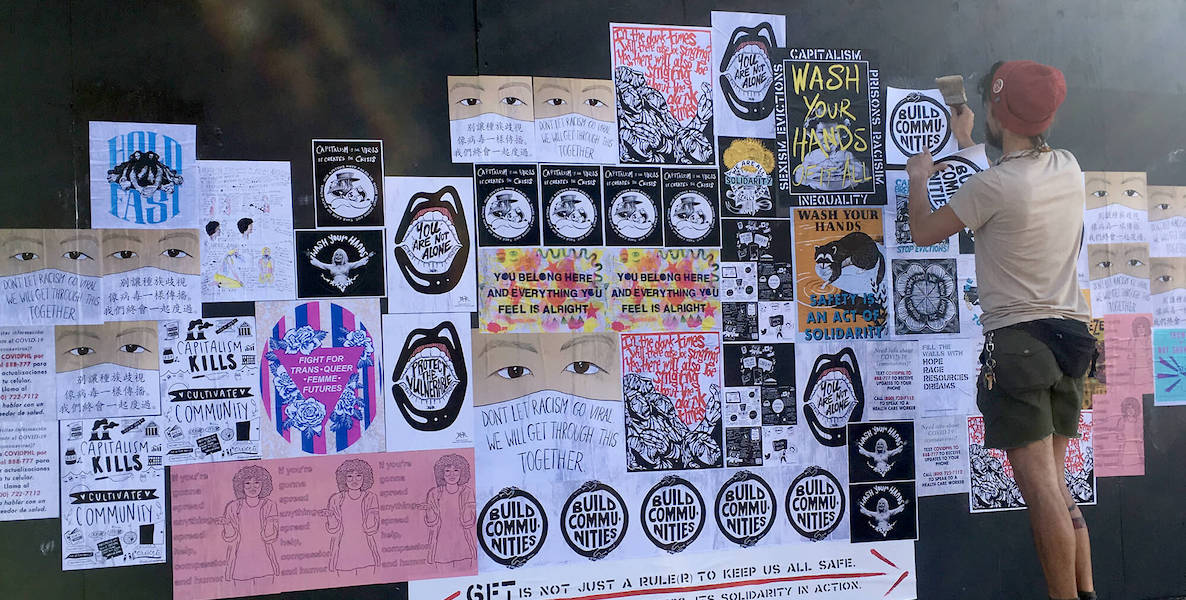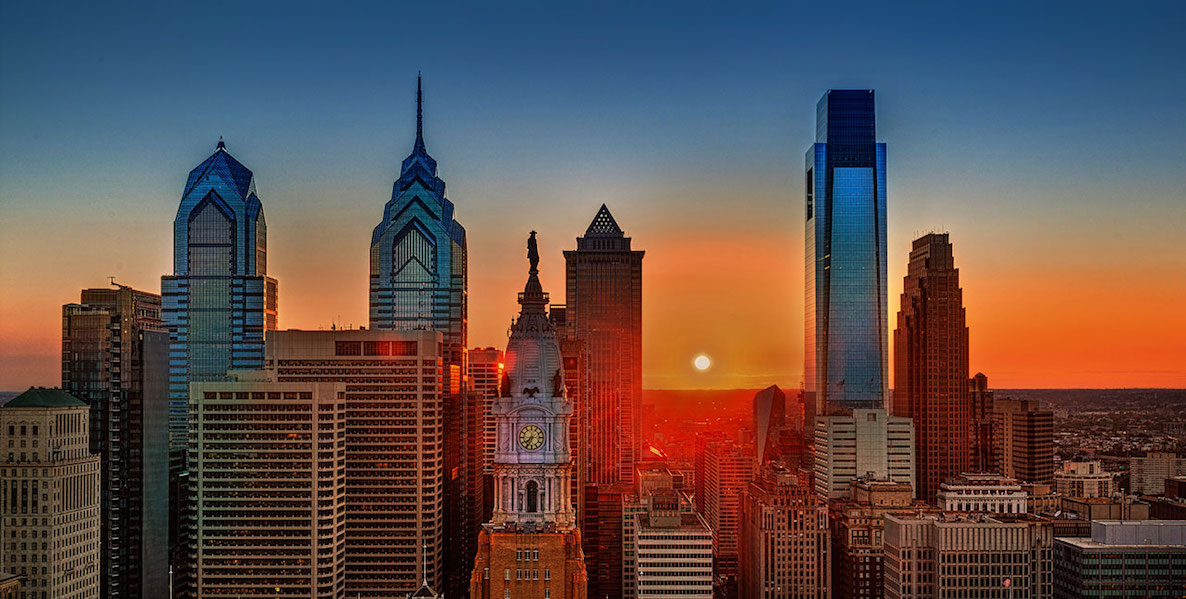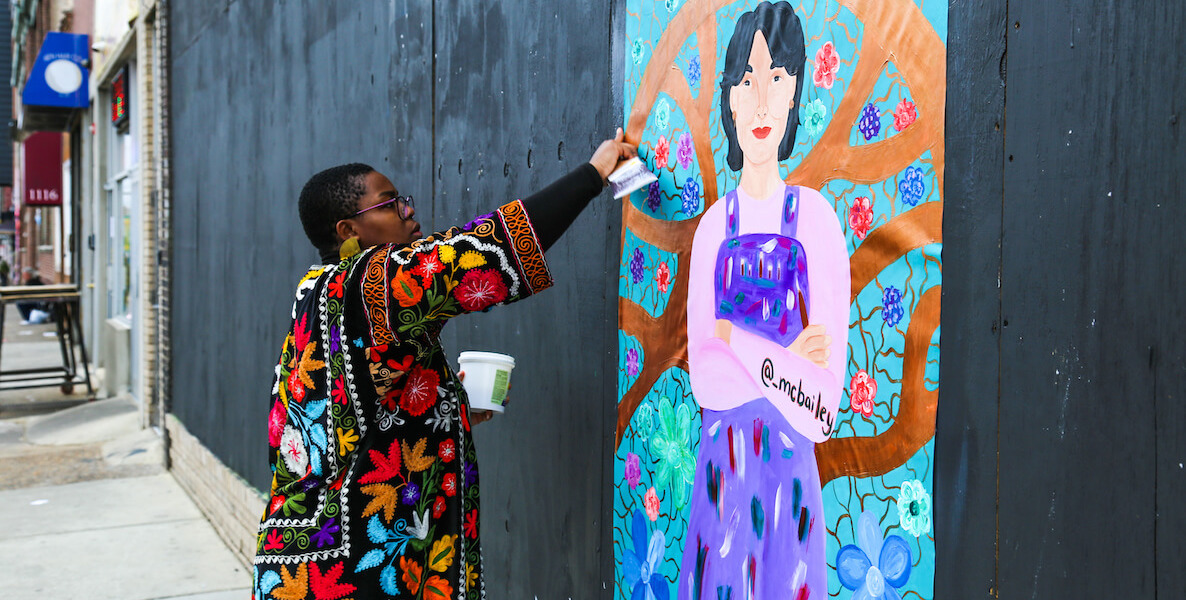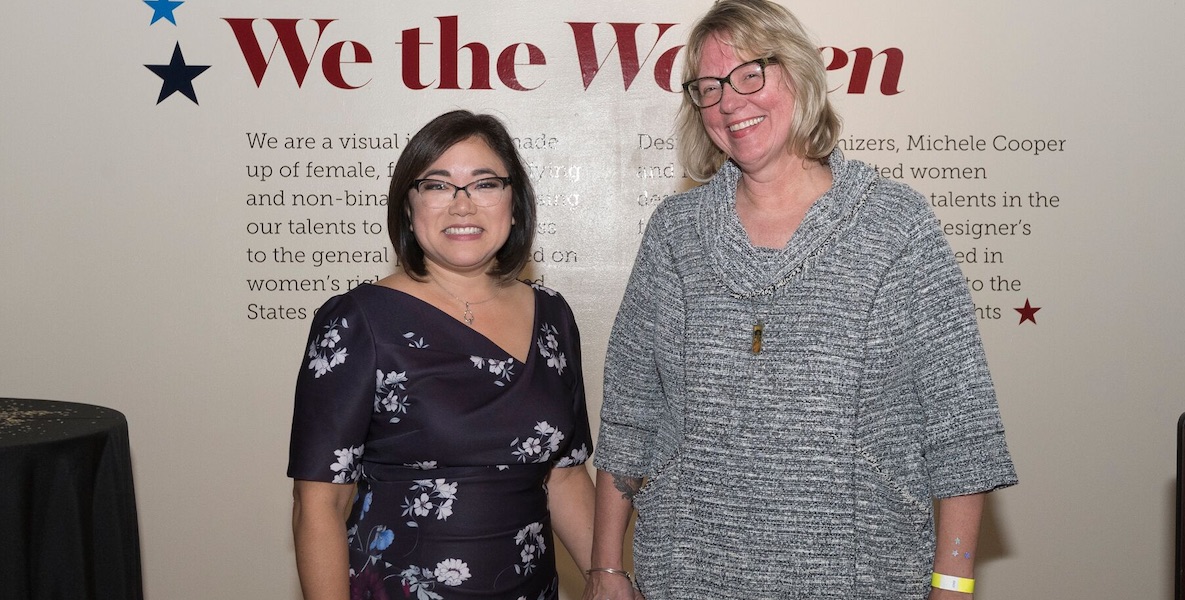Famed street artist Keith Haring once said:
“[Art] should be something that liberates the soul, provokes the imagination and encourages people to go further. It celebrates humanity instead of manipulating it.”
Haring, who rose to prominence for the messaging of his bold works during the AIDS and crack epidemics, is best known for his contributions to the New York art scene in the ’80s—but he was actually born in Reading, and grew up in Kutztown. (You can see one of his murals right here in Philly, at 22nd and Ellsworth streets.)
Now, 30 years after his death, Philly artists are upholding Haring’s belief in the Support the projectDo Something
The all-volunteer project is the brainchild of local artist-activist Mark Strandquist, one of the founders of Philadelphia’s Reentry Think Tank and People’s Paper Co-Op, an initiative at Village of Arts and Humanities.
His vision: for artists and poets to submit work that can be downloaded, printed, and posted around the city to uplift, educate and inspire. The idea came to Strandquist while walking through his own neighborhood in southwest Philly and seeing boarded-up businesses, empty schools, deserted playgrounds.
Art is “one of the rare mediums where we can literally imagine a future, a world, beyond what we’re currently living within; to dream of a future, that’s hopefully not so far off, that will support all of us, not just the few.”
“I started thinking about the emotional toll that takes on all of us, and wondering how, in this moment of disconnection, we could try to create a vehicle for bringing people together,” he says.
Strandquist put out a call via social and emails to artists with two questions: If you could paint the empty walls around us with any messages, poems, images, or poster designs, what would you create and share to support our neighbors’ physical and mental and emotional health? How can you help us all, in this moment, dream of a more just and collective future?
Almost immediately, dozens of artists responded with work to share.
Now, Strandquist and fellow volunteers are uploading the work to a website so that anybody, anywhere, can download the art and freely distribute and post it. The team is also wheat-pasting them in public spaces, with permission from businesses and real estate developers.
Share artDO EVEN MORE
The works include messages like “Housing = Healthcare; Rent Freeze Now!” and “Wash Your Hands/Safety Is An Act of Solidarity.” Many of them are being printed in multiple languages, and many pay tribute to the workers who continue to rise to today’s challenges: the healthcare workers, the neighborhood grocers, the daycare employees.
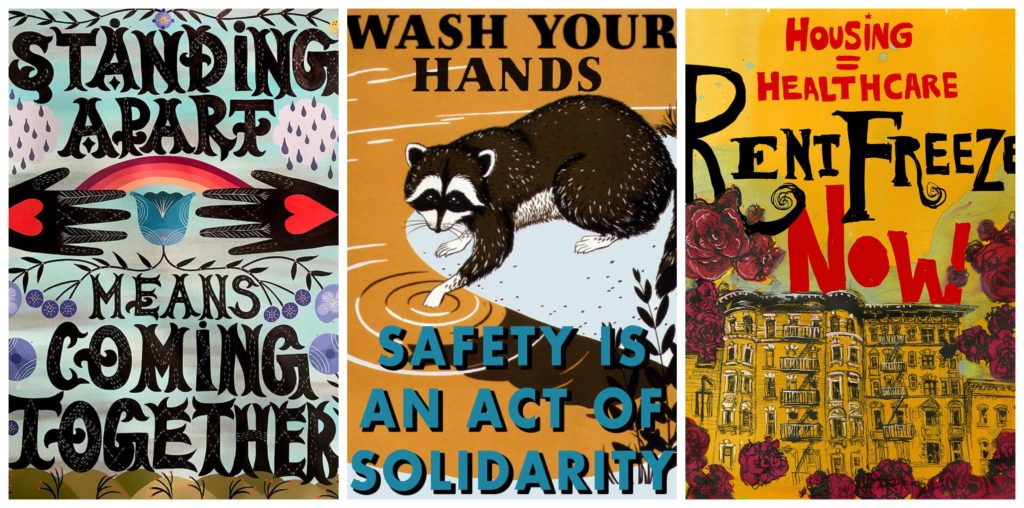
One poster says, “My heart overflows with gratitude for the workers giving us life,” and has bold images of a delivery person, a cashier and other frontline workers.
“This is a moment when we, as a society, are seeing and naming many of the invisible laborers that maintain our world, and I think it’s an awesome opportunity for artists to name that and ensure that we’re fighting for their rights in this moment, as well,” Strandquist says.
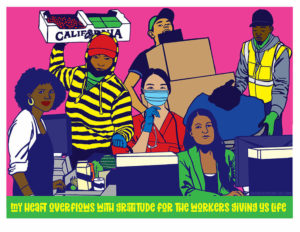
Strandquist is being strategic about the placement of installations; for now, they’re at at 12th and Spring Garden, 2nd and Laurel, 2544 Germantown Avenue, Asian Arts Initiative in Chinatown and PhillyCAM at 8th and Market, and via smaller installations people have been putting up across the city on their own.
Within a week there will be installations all along South Street. “We want to make sure that people are seeing this on what might be the one walk that they do that day,” he says, as he reaches out to city partners for permission to put them along routes near grocery stores and pharmacies.
And on Thursday, one of the installations will serve as a backdrop at The Village’s distribution of food from Share, as well as art supplies like coloring books. (The Village will be doing distributions every Monday and Thursday, from 10am until noon, at their HQ at 2544 Germantown Avenue, with volunteer support from Hartranft Playground Alliance.)
“In a time like this, it’s important to be reminded of vision, of joy, of all the elements of the human condition that make us beautiful creatures.”
“At The Village, we’ve seen how art can really transform spaces and be aspirational and really represent our highest selves,” says The Village’s Executive Director Aviva Kapust. “And in a time like this, it’s important to be reminded of vision, of joy, of all the elements of the human condition that make us beautiful creatures. To have the artwork as a backdrop when we partner to distribute food and other resources starts to really bring a sense of care and love, especially in a neighborhood that already has been challenged, for well over a half century, with many different socioeconomic issues.”
Strandquist welcomes artists and poets of all walks to continue to reach out. His mission is aligned with the vision of street artists worldwide, from whom he takes inspiration: Mexico’s art movement, Occuprint, which came out of Occupy Wall Street, Justseeds Artist Collective, which for years has had free, During the pandemicMORE WAYS TO HELP
Strandquist recognizes that art will not solve the pandemic, that what we need now is for people to take this seriously and for healthcare providers to get the resources they need. But he believes strongly that there is a role for artists to play.
“There is a really strategic and important and powerful role for the arts, for artists in this moment, and hopefully this is one of many examples of that,” he says. Art is “one of the rare mediums where we can literally imagine a future, a world, beyond what we’re currently living within; to dream of a future, that’s hopefully not so far off, that will support all of us, not just the few.”
Header photo courtesy Erik Ruin


